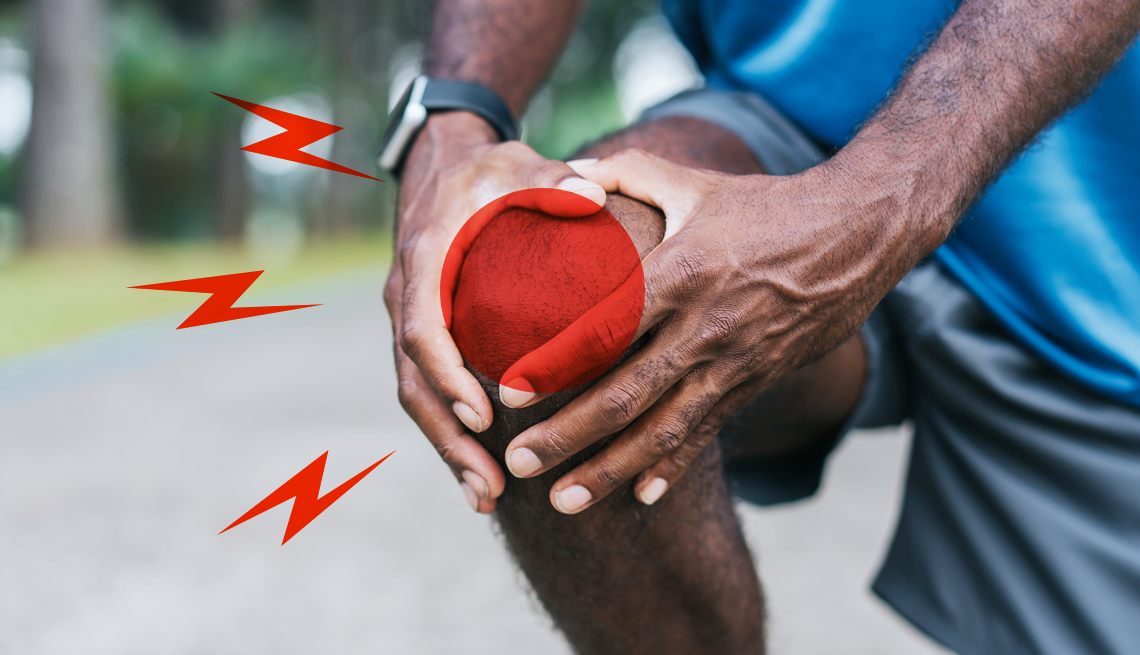AARP Hearing Center


As you may be painfully aware, knee pain is very common. Global estimates suggest that more than 1 in 5 adults age 40 and over experience this type of joint problem, and knee pain in men and women in the United States increases steadily after age 60.
Persistent aching, swelling and tenderness in the knee joint don’t mean that you need knee replacement right away; you can do many things on your own to help ease knee discomfort.
Self-care is important for managing knee pain, says Leigh F. Callahan, associate director of the Thurston Arthritis Research Center at the University of North Carolina.
Here are some of the best home-based ways to help your knees feel and function better.
1. Aim for light activity, easy exercise
Haven’t been moving much recently? You can get big benefits from doing light-intensity activities such as gardening, walking and housework. A study published in the American Journal of Preventive Medicine found that light activity may reduce the risk of physical limitations in people who are sedentary. The authors concluded that when moderate to vigorous physical activity is not an option, trying light activity may be better than no activity at all.
“Joint pain is a kind of a move-it-or-lose-it phenomenon,” says Alexander K. Meininger, M.D., a board-certified orthopedic surgeon and a member of the medical staff at University of Colorado Health Yampa Valley Medical Center. “Motion is the lotion ... exercise is an important tool to help patients feel better and functionally get better."
Callahan, who is also the director of the Osteoarthritis Action Alliance, suggests people with knee problems try the Arthritis Foundation’s program Walk With Ease, which she helped create. Designed for people who are not currently physically active, the program is backed by the Centers for Disease Control and Prevention and is effective in increasing balance, reducing pain, and improving flexibility and overall health.
2. Try to lose a little, not a lot, of weight
Extra body weight certainly stresses the knee joints, but you don’t need to shed very many pounds to reduce their burden. Losing one pound equals four fewer pounds of pressure on a knee joint, Callahan notes.
In other words, a little bit of weight loss can make a big difference in how you feel. You don’t need to lose 20 pounds or become model-thin to be successful, says Callahan, stressing that “the important message is that a little bit can help a lot.” Do not be discouraged, she says.
How to Know When to See a Doctor
Sharp pain or changes in pain character and quality are telling, Amy S. Beacom, M.D., says. “Like, this isn’t my usual pain. All these things that I typically do, it’s not helping,” she says. “If the pain has not woken you up at night before, and now new pain is keeping you awake or waking you up: That is something that needs to be addressed.”
3. Work on improving your balance
People with fear of movement are more likely to be inactive, Callahan says. Two things contribute to the fear of movement, she says: concern that moving will exacerbate pain, and worry about falling. Balance often worsens with age in part because muscle mass decreases, resulting in muscle weakness.
Fear of falling is not irrational, especially since people with knee arthritis may also experience problems with balance because age-related joint wear and tear can throw off the body’s ability to sense its own position. Luckily, balance training can help improve balance and functional performance, according to a review published in 2022.
Ready to get started? Check out the exercises featured in “5 Exercises to Restore Strength, Agility and Balance.”
Tai chi, or “moving meditation,” can help you steady yourself and improve your balance. The traditional Chinese practice that combines a series of slow movements and controlled breathing is designed to center your energy and helps prevent falls — and it has also been shown to help older adults boost mood and memory, lower blood pressure, and ease pain. For more, see our “Intro to Tai Chi” video and “8 Surprising Reasons to Try Tai Chi After 50.”
































































More From AARP
How to Choose a Top-Notch Doctor as You Age
Physician Sharon Malone, author of ‘Grown Woman Talk,’ tells us what to consider when looking for the best care
What is a Plant-Based Diet?
The term may sound trendy, but really this eating style has been around for millenniaThe 7 Worst Habits for Your Joints
Everyday actions that can cause inflammation and pain
Recommended for You